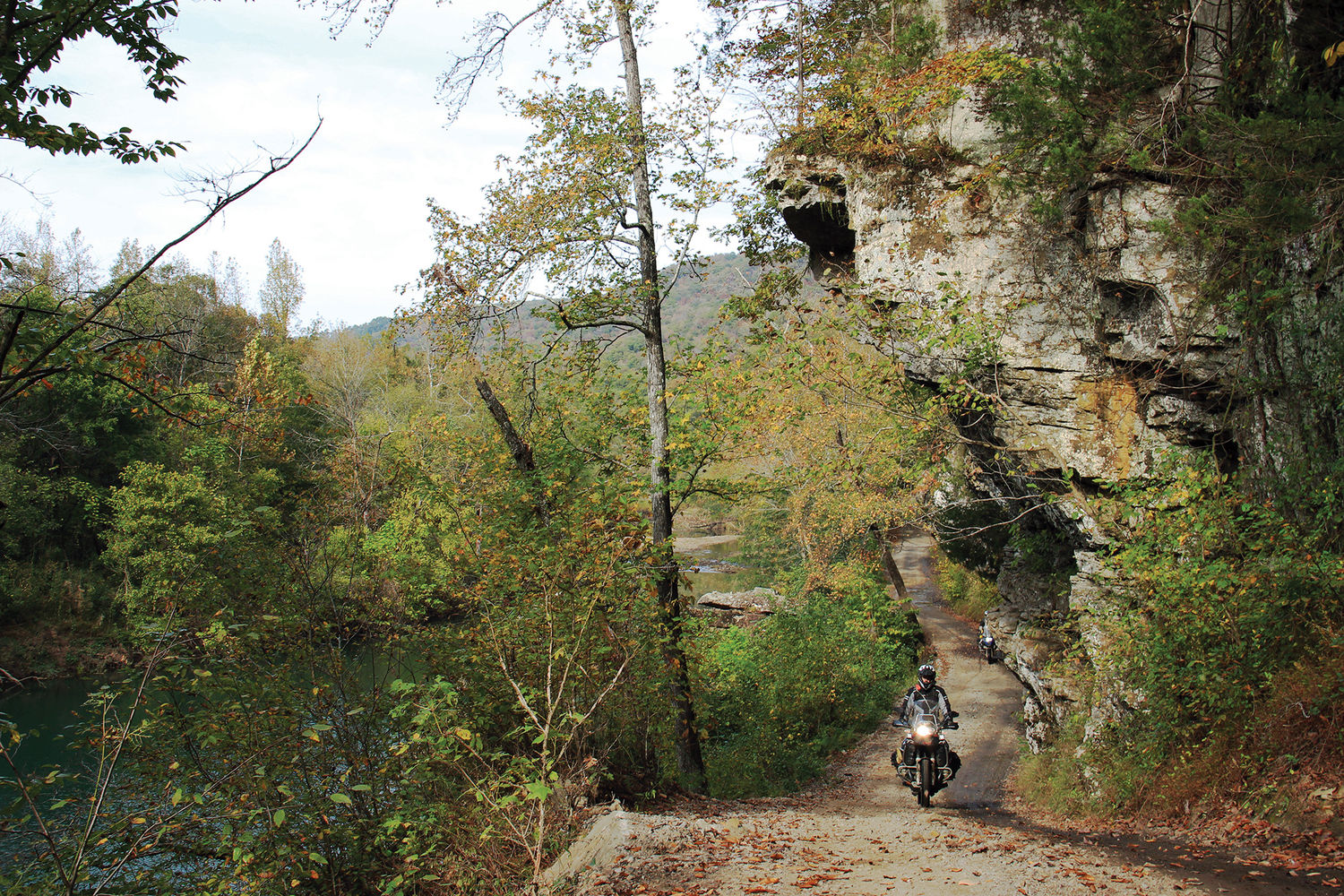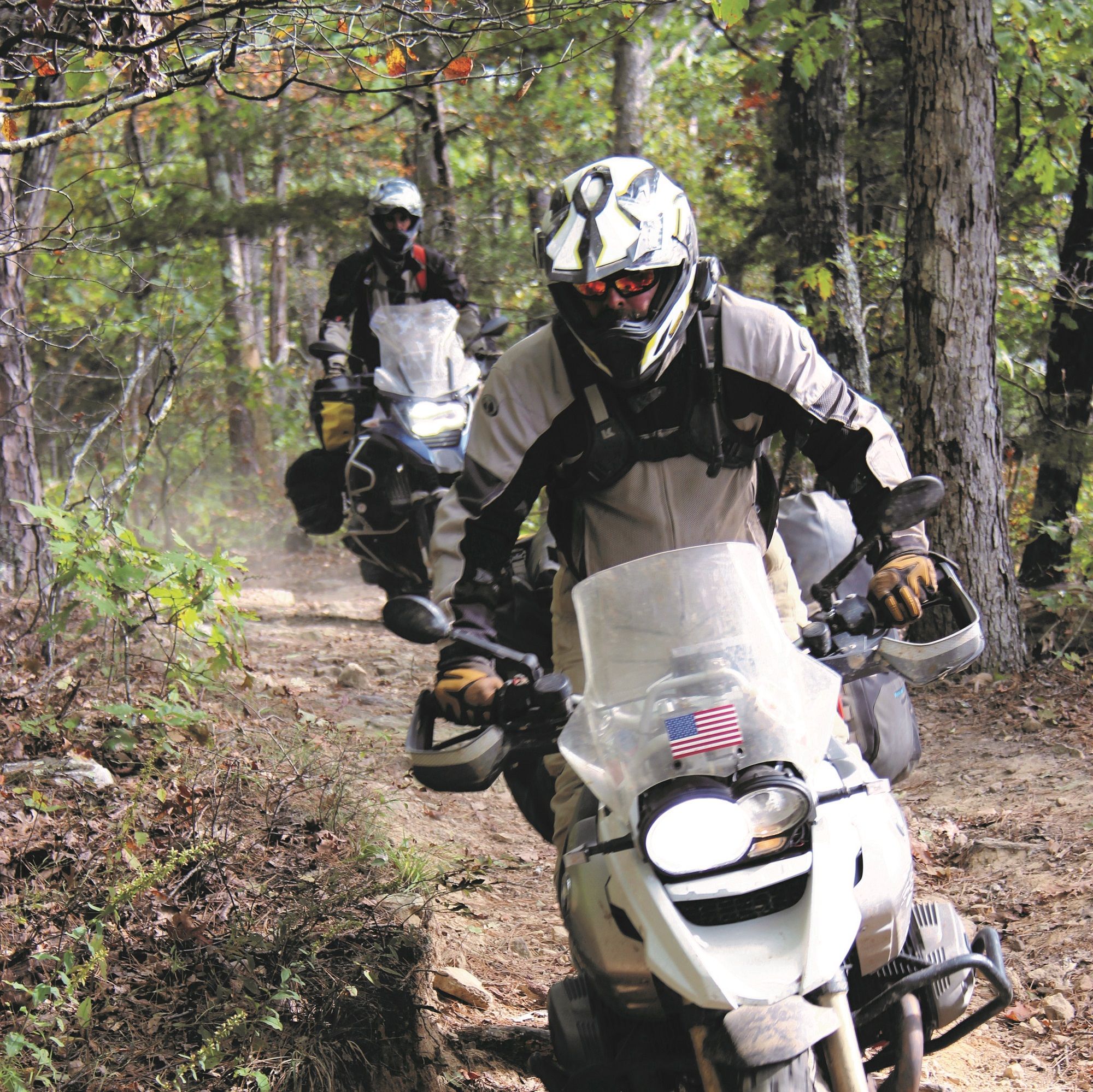Arkansas: The Untamed Side of the Natural State

A tawny, striped face stares at me, unblinking. The Bengal tiger must weigh almost 400 pounds, and she is only a few steps away. I didn’t know there were tigers in Arkansas. Her name is Crysta and she is a permanent resident at Turpentine Creek Wildlife Refuge, seven miles south of Eureka Springs. Thankfully, two stout fences stand between us. This is the best home she has ever known.
Our first night’s accommodations were even better than Crysta’s, as we had holed up at the Best Western Inn of the Ozarks in Eureka Springs. The Southern hospitality and homestyle cooking of their Myrtie Mae’s Cafe was a hearty beginning to what would be a dusty and dirty ride. We were chomping at the bit to experience the wilder parts of the Natural State.

I am accompanied by four serious adventure riders, Josh, Todd, and Zeke, who help coach at my adventure riding school in Oklahoma, and our guide, Jim Devereux, a native of central Arkansas and a retired riverboat captain. “Devro,” as he is nicknamed, has long appreciated the history and geography of the area and is a friend of Turpentine Creek’s owners, Scott and Tanya Smith, who have arranged a behind-the-scenes tour for us. Ike Wever, their education and promotions coordinator, shows us around. We are thankful to be on the safe side of sturdy barricades as we encounter these beautiful creatures eye to eye. Lions, tigers, and, yes, even bears find food and comfort here. As we prepare to leave the sanctuary, Ike gives us each a polished African Tiger’s Eye stone as a token of good luck for our journey.
On his KLR 650, Devro leads our group of four BMW R 1200 GSs south on Highway 23 to Forum where we stop at Withrow Springs State Park to fill our water bottles. The spring flows clear and clean from a bluff near the road.

Country Folk
We leave the pavement northeast of Huntsville before turning south toward White Rock Mountain, where we plan to camp. A few miles later we begin to descend a narrow, tree-canopied dirt road when a white-bearded old man dressed in overalls leaning into a faded red push mower catches my eye. Across the yard is a Ford Model A coupe. The scene is irresistible and I stop. The man squints at us, seemingly unperturbed by our presence, so I approach him with a smile. “Does that old car still run?”
“Did last time I drove it,” he says with the wit of someone who has answered a lot of random questions in his day.
Paul Vanderpool says he has lived in this old house more than 70 years. He says he’s had the car 75 years, making me wonder how old he actually is. Paul opens the door, inviting me to climb in. I notice a plaque on the passenger door with the name “Glenda” carved into it. I comment, “I trust that’s the name of a special lady,” and Paul confirms the notion.
Motorcycle & Gear
Helmet: Touratech Aventuro
Jacket: Klim Badlands
Pants: Klim Badlands
Boots: Sidi Adventure GORE-TEX
Gloves: Klim Mojave
Luggage: Wolfman Rocky Mountain
“Yup. She still keeps me in line.” I am pleased to hear that Paul’s wife is still around. He motions toward the house and says, “Y’all come on inside. I want to show you something.” We follow him and discover a woman sitting at a quilting rack, her work spread out before her. “You must be Glenda,” I speculate.
“I am,” she replies with an engaging smile, as if she has strange guests every day.
Paul opens a closet and begins pulling out handmade turtle shell guitars. He hands one to each of my friends and takes one himself. We follow him back into the front yard where he plays us a tune. Notes that could have been born of the union of a banjo and guitar fill our ears and seem fitting for the man and the place. The folks living in these woods are as colorful as the autumn trees.

Work During the Great Depression
We hurry down to the White Rock Mountain Recreation Area, trying to beat sunset. Almost there, we come across an old Civilian Conservation Corps (CCC) encampment at Fugit Springs on Potato Knob, the date, 1936, perfectly preserved in mortar on a wall. The CCC was part of FDR’s New Deal in the Depression era, a way to put young men to work while building many of our nation’s bridges, schools, armories, and other public infrastructure.
